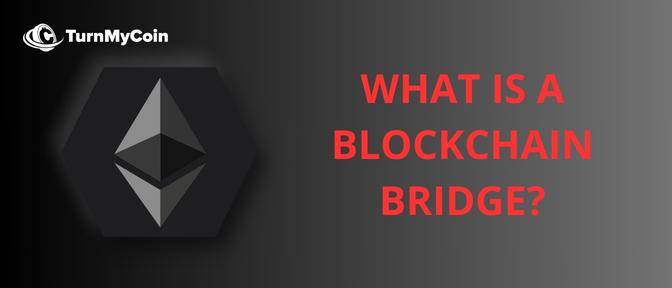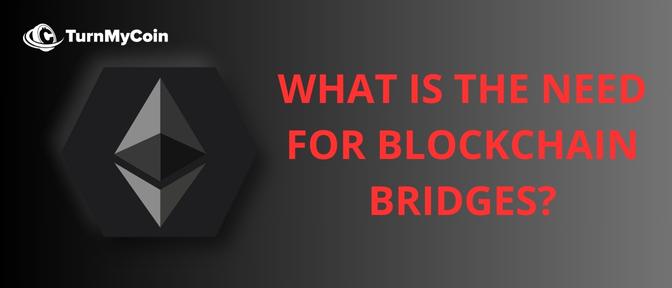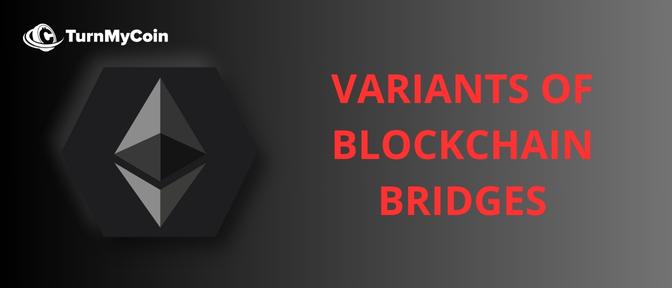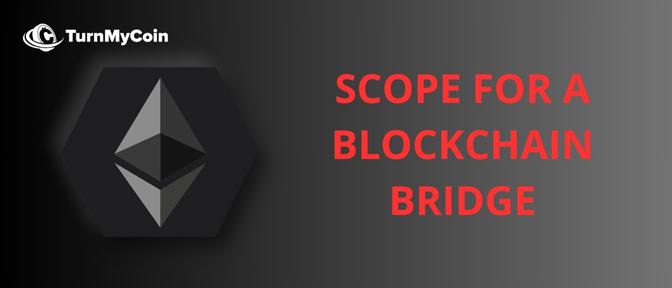Introduction
Blockchain technology has come a long way since its debut in the 2008 Bitcoin whitepaper. The rise of cryptocurrencies and programmable blockchain networks like Ethereum has created a new decentralised ecosystem.
Blockchain values decentralisation and freedom from control, but most blockchain networks are isolated communities with their own economies.
- Ethereum Blockchain,
- Avalanche Blockchain,
- Polygon Blockchain,
- Velas Blockchain, and
- Solana Blockchain are some examples.
That’s where blockchain bridges come in – they allow interactions between different blockchain networks and improve interoperability.
These bridges open up opportunities for one blockchain network to use the resources of another. As blockchain technology evolves, there’s a growing demand for bridge blockchain projects to enhance interoperability.
These bridges serve as intermediaries, enabling interoperability and enabling the exchange of digital assets, information, and other forms of value across different blockchain ecosystems.
The technology behind blockchain bridges usually involves smart contracts and decentralised oracles to ensure the security and trustworthiness of the transfers.
Let’s understand Bridge Blockchain in detail below.
What is a Blockchain Bridge?

A blockchain bridge is a vital component of the decentralized ecosystem. It acts as a link between two or more separate blockchain networks, allowing the transfer of assets or data between them.
This enables the different blockchain networks to communicate and interact with one another. The technology behind blockchain bridges uses smart contracts and decentralized oracles to ensure secure and trustworthy transfers.
As intermediaries, these bridges eliminate barriers and allow for seamless connectivity and interoperability between diverse blockchain networks. The working of a blockchain bridge may vary, but its ultimate purpose is always to create a seamless connection between different blockchain ecosystems and facilitate the exchange of value and information.
What is the Need for Blockchain Bridges?

The need for blockchain bridges arises from the growth of blockchain technology and the creation of multiple isolated blockchain networks with their own economies.
To enable decentralisation, the core principle of blockchain. It is necessary for different blockchain networks to interact and exchange assets, information, and value. Blockchain bridges provide the solution for interoperability between different blockchain networks, enabling seamless communication and transfer of assets, information, and value.
This opens up new possibilities for decentralized applications, allowing them to use the resources of multiple blockchain networks. Without a bridge blockchain, each blockchain network would remain isolated, limiting the potential for decentralized applications and the growth of the blockchain industry.
The technology behind blockchain bridges is designed to be secure and trustworthy, ensuring the integrity of the transfers. Thus, blockchain bridges play a crucial role in supporting the growth and maturity of the blockchain ecosystem.
Variants of Blockchain Bridges

There are several variants of bridge blockchain, each with its unique features and working mechanism.
1. Trusted Bridges
Trusted Bridges are blockchain bridges that rely on a trusted third party to facilitate the transfer of assets between different blockchain networks. The trusted third party acts as an intermediary and verifies the authenticity of the transfers.
This type of blockchain bridge is fast and efficient, but the reliance on a trusted third party can raise concerns about security and decentralization.
2. Trustless Bridges
Trustless Bridges are blockchain bridges that operate without the need for a trusted third party. This type of bridge relies on the consensus mechanism and smart contracts to ensure the security and authenticity of the transfers.
Trustless Bridges are more secure and decentralized, but can be slower and more complex than Trusted Bridges.
3. Unidirectional Bridges
Unidirectional Bridges are blockchain bridges that allow the transfer of assets or information in one direction only. For example, from Blockchain A to Blockchain B, but not from Blockchain B to Blockchain A.
This type of bridge is useful for specific applications where the transfer of assets or information in one direction is sufficient.
4. Bidirectional Bridges
Bidirectional Bridges are blockchain bridges that allow the transfer of assets or information in both directions. This type of bridge enables full interoperability between two blockchain networks, allowing the exchange of assets, information, and value in both directions.
Bidirectional Bridges are the most versatile and flexible type of blockchain bridge, providing the most comprehensive solution for interoperability between different blockchain networks.
Scope for a Blockchain Bridge

The potential of blockchain bridges is immense and the future looks bright for this technology. With the growing adoption of blockchain networks, the need for seamless communication between different blockchain ecosystems has become critical.
Blockchain bridges fill this need by enabling the transfer of assets, information, and value between different blockchain networks. The future holds exciting opportunities for blockchain bridges as they become a key component of the decentralized ecosystem.
Cross-chain communication and collaboration will become a norm, unlocking new possibilities for decentralized applications to access resources from multiple blockchain networks.
This will lead to more comprehensive services and solutions for users.
In addition, blockchain bridges can also drive the growth and maturity of the decentralized finance (DeFi) sector. By allowing different blockchain networks to work together, bridges can promote interoperability standards and best practices that can be adopted by the wider industry.
This will encourage innovation and growth, improving the user experience for those interacting with decentralized applications. Developers can also take advantage of the functionalities offered by blockchain bridges to build more innovative decentralized applications.
With the help of interoperability, scalability, and utility, bridges can help developers create new designs that bring the best of different blockchain networks together.
Risks of Blockchain Bridges

Despite the potential benefits of blockchain bridges, they also come with certain risks and challenges. Some of the key risks associated with blockchain bridges include:
- Security: One of the primary risks with blockchain bridges is security. Since bridges serve as the link between different blockchain networks, they are vulnerable to hacking and other forms of cyber-attacks.
This could result in the loss of assets, information, and value. - Scalability: As the demand for blockchain bridges grows, the question of scalability arises. Can blockchain bridges handle the increased volume of transactions and data that they are expected to handle in the future? This is a major challenge that needs to be addressed.
- Interoperability: Interoperability between different blockchain networks is a key challenge for blockchain bridges. It requires coordination and collaboration between different blockchain ecosystems, which can be difficult to achieve.
- Technical Challenges: The technical complexity of blockchain bridges can also present challenges. For example, issues such as latency and transaction speed can arise, which can impact the user experience and the overall functionality of the bridge.
- Regulation: Another challenge associated with blockchain bridges is the issue of regulation. Different countries have different laws and regulations when it comes to blockchain technology, and the interoperability of different blockchain networks can make it difficult to ensure compliance with these regulations.
Popular Blockchain Bridge Examples

Here are some popular examples of blockchain bridges:
- Polkadot: Polkadot is a multi-chain network that allows for interoperability between different blockchain networks. It enables the transfer of assets, data, and information between different blockchain networks in a secure and seamless manner.
- Cosmos: Cosmos is a decentralized network of blockchain networks that allows for the seamless exchange of data and assets between different blockchains. It has a modular architecture that enables the integration of various blockchain networks and reduces the need for custom integration work.
- Ren: Ren is a decentralized cross-chain liquidity protocol that enables seamless transactions between different blockchain networks. It is designed to provide a secure and fast bridge between various cryptocurrencies, making it easier for users to transfer value and assets across different blockchain networks.
- Aion: Aion is a blockchain network that enables the interoperability of different blockchain networks. It has a unique architecture that enables the transfer of data, assets, and information between different blockchain networks in a secure and seamless manner.
- Chainlink: Chainlink is a decentralized oracle network that enables smart contracts to interact with data from off-chain sources in a secure and decentralized manner. It is designed to serve as a bridge between different blockchain networks, allowing for the seamless exchange of data and assets.
These are some of the popular examples of tools that bridge blockchain helping to enhance the interoperability and functionality of the decentralized ecosystem.
They are designed to provide secure, fast, and cost-effective bridges between different blockchain networks. Which enables the seamless transfer of assets, data, and information between them.
Conclusion
The basics, workings, types, and benefits of blockchain bridges highlight their potential to shape the future of blockchain.
By leveraging the bridges, the blockchain community can reap the benefits of interoperability and scalability, while maintaining true decentralization. The growth of blockchain bridge projects can strengthen and enhance the web3 ecosystem for users.
The smooth transfer of assets between different blockchain networks can also help developers overcome common hurdles in decentralized application development. As the demand for blockchain applications, such as DeFi, NFTs, and DAOs, continues to rise, bridges can provide seamless user experiences.
Discover the significance of blockchain bridges for the future of web3 and stay ahead of the curve.


